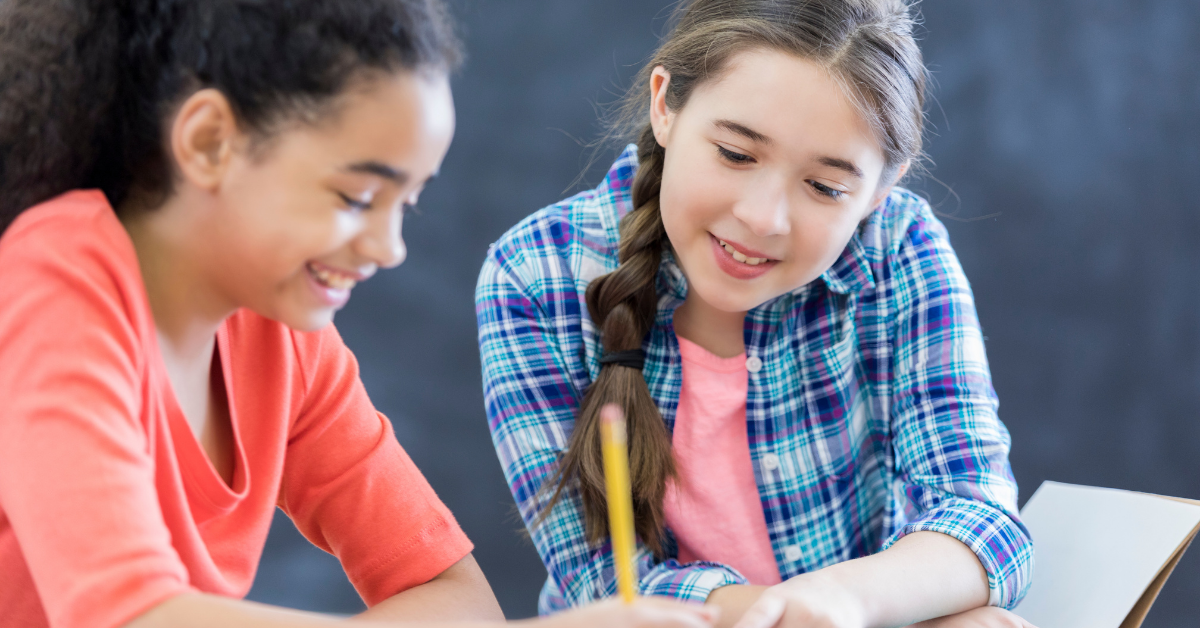
Need to Know
- Competition and collaboration are both utilized to motivate and foster student learning.
- Each has potential advantages and drawbacks.
- Debriefing competitive and collaborative experiences help us learn and grow.
A Closer Look
Collaboration. Competition. They’re both embedded aspects of curriculum and instruction. So, which one comes out ahead when it comes to student learning?
We’ll explore the pros and cons of both. But first, let’s take a moment to clarify our language.
How Is Collaboration Defined in Education?
There isn’t a universally accepted definition of what collaboration is. But there does seem to be a consensus about what’s at its core: working together. Here’s the U.S. Department of State’s take: “Simply defined, collaboration takes place when members of an inclusive learning community work together.” Successful collaboration relies upon mutual goals, voluntary participation, shared responsibility, and group accountability.
What about Competition?
Student competition relates to any skill-based event where learners compete (as individuals or teams) to achieve a prize. There’s also a lot of talk about healthy versus unhealthy competition. What’s the difference? Healthy competition, writes Meredith Connie, “is the interaction between individuals that promotes and fosters striving for higher achievements while creating an environment where everyone in the group hopes that everyone will do well, rather than wish that others fail.”
So, Which Serves Our Students Better?
Let’s take a closer look at the two methods to see if we can section out clear pros and cons for each. Then, we’ll jump in with the advantages.
- Collaboration: Advantages within the Learning Space
Collaboration has been demonstrated to develop kids’ higher-level thinking abilities, boost self-confidence, and strengthen essential SEL skills (especially those linked to prosocial behaviors, responsible decision making, and leadership). It can also lead to better brainstorming and increased empathy, as kids learn to work and think alongside diverse learners. Some researchers even argue that collaboration enhances core content achievement, as students engage with the material in various ways and through multiple lenses.
- Competition: Advantages within the Learning Space
A purposefully designed element of competition can enhance engagement, increase effort and attention, and drive performance outcomes. It may also build character and prepare kids for participation in the real world. Some even suggest that we’re simply hardwired for this type of engagement. “Competition has been at the core of the survival of the human species, driving both our biological and psychological evolution,” says Anastasia Belyh in How Competition Affects Your Brain. “Today, while many of the competitions we engage in are not a matter of life and death, this evolutionary trait is still active in our brains.”
- Collaboration: Disadvantages within the Learning Space
There are plenty of benefits to student collaboration, but it’s not void of challenges. For example, not all students “pull their weight,” making the collaborative process seem unfair (and, in some cases, even undermine a positive classroom culture). Sometimes, one learner takes over an entire group’s effort, steamrolling other kids’ efforts or ideas along the way. Or, students can get off task or have irrelevant side conversations. Additionally, some people may not feel comfortable working with others (and some individuals might simply not get along at all). Fortunately, effective classroom management and well-curated lessons can put a damper on many of these derail symptoms, but not all of them, all the time.
- Competition: Disadvantages within the Learning Space
Student competition is often referred to as a double-edged sword, and for a good reason. Critics of student competition claim that it can amplify student stress or anxiety, creating real problems for SEL-vulnerable kids (like those with a history of adverse life experiences). Additionally, unhealthy competition is linked to destructive self-concept and lowered engagement (essentially negating its use as a motivation driver). And, unfortunately, not all educators are adept at distinguishing between these two types of competition.
What If It Doesn’t Have to Be Either/Or?
“One of the most common concerns and misconceptions regarding educational competitions is the Competition vs. Collaboration debate,” reports the Institute of Competition Sciences. “We mistakenly think that competition is the antonym to collaboration; however, when we break it down, well-structured, consciously designed competitions actually foster collaboration and teamwork.” This brings us back to the idea of healthy competition, which is achieved by setting attainable goals and promoting teamwork.
How can these elements work together? Take WordMasters Challenge, for example. It’s a national competition for students in grades 3-8 that encourages growth in vocabulary and verbal reasoning skills. Each year, over 125,000 students from some of the best public and private schools throughout the United States participate in the WordMasters Challenge. Students compete as individuals to qualify, but more importantly, work as a team to achieve a high score for their school. WordMasters uses both competition and collaboration together to spark engagement and develop students’ language skills.
Pro tip: Creating a motivating classroom environment that uses both competition and collaboration intentionally is our best bet for developing proficient adults. We can do this by debriefing competitive and collaborative efforts to help pull out “lessons learned” from the experience. Adults find themselves in competitive scenarios in the workplace (think sales spiffs) and face collaboration challenges (consider interdepartmental collaboration on a product launch). By teaching students to speak openly through a debriefing process regarding what went well, and what we can improve for next time, students learn the soft skills of performance improvement and the skills of teamwork and gracious competition that will serve them throughout life.


